Harry Bruinius in The Christian Science Monitor:
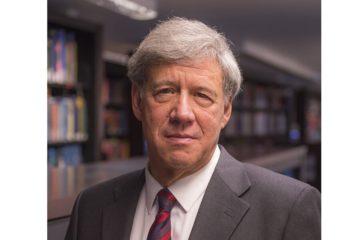 In a 6-3 majority ruling on Friday, the Supreme Court overturned Roe v. Wade, the 1973 decision giving women the right to abortion. In anticipation of the ruling last week, the Monitor interviewed Geoffrey R. Stone, author of the legal history “Sex and the Constitution.” The history of abortion in the United States is more complicated than many people realize, says Professor Stone, who teaches law at the University of Chicago. Government regulation of abortion has long been connected to the nation’s religious history, caught in the ebbs and flows of evolving cultural mores that also resulted in national prohibitions against contraception, private sexual behavior, and obscenity.
In a 6-3 majority ruling on Friday, the Supreme Court overturned Roe v. Wade, the 1973 decision giving women the right to abortion. In anticipation of the ruling last week, the Monitor interviewed Geoffrey R. Stone, author of the legal history “Sex and the Constitution.” The history of abortion in the United States is more complicated than many people realize, says Professor Stone, who teaches law at the University of Chicago. Government regulation of abortion has long been connected to the nation’s religious history, caught in the ebbs and flows of evolving cultural mores that also resulted in national prohibitions against contraception, private sexual behavior, and obscenity.
What made you decide to delve into questions about sex and the Constitution and the regulatory history of abortion?
I was a law clerk for Justice [William R.] Brennan on the Supreme Court when Roe was decided [in 1973], and I was intrigued by the fact that the court during that era had not only adopted a Constitutional right to contraception and a right to abortion, but later a right of gay people to engage in sexual behavior and then a right of gay people to marry. So, I was curious how did this all come about?
More here.

 As the Fourth of July looms with its flags and its barbecues and its full-throated patriotism, I find myself mulling over the idea of American exceptionalism. What, if anything, makes this country different from other countries, or from the rest of the developed world, in terms of morals or ideals? In what ways do our distinct values inform how America treats its own citizens?
As the Fourth of July looms with its flags and its barbecues and its full-throated patriotism, I find myself mulling over the idea of American exceptionalism. What, if anything, makes this country different from other countries, or from the rest of the developed world, in terms of morals or ideals? In what ways do our distinct values inform how America treats its own citizens? Zachary Manfredi in Boston Review:
Zachary Manfredi in Boston Review: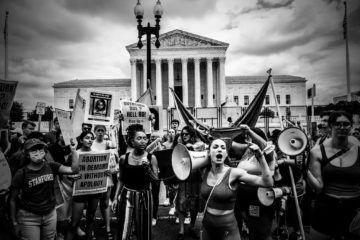 For the first time in history,
For the first time in history,  “P
“P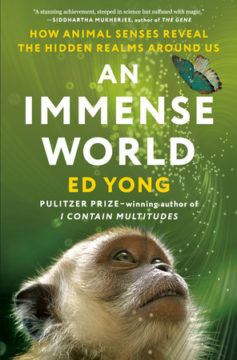 That I found myself surprised at so many moments while reading “An Immense World,” Ed Yong’s new book about animal senses, speaks to his exceptional gifts as a storyteller — though perhaps it also says something regrettable about me. I was marveling at those details because I found them weird; but it turns out, if I try to expand my perspective just a bit, they aren’t so weird after all. One of Yong’s themes is that much of what we think of as “extrasensory” is “simply sensory.” A term like “ultrasound” is “an anthropocentric affectation.” The upper frequency limit for the average human ear may be a measly 20 kilohertz, but most mammals can hear well into the ultrasound range.
That I found myself surprised at so many moments while reading “An Immense World,” Ed Yong’s new book about animal senses, speaks to his exceptional gifts as a storyteller — though perhaps it also says something regrettable about me. I was marveling at those details because I found them weird; but it turns out, if I try to expand my perspective just a bit, they aren’t so weird after all. One of Yong’s themes is that much of what we think of as “extrasensory” is “simply sensory.” A term like “ultrasound” is “an anthropocentric affectation.” The upper frequency limit for the average human ear may be a measly 20 kilohertz, but most mammals can hear well into the ultrasound range.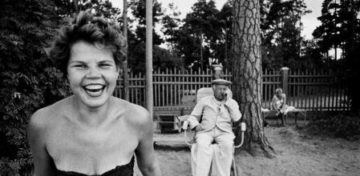 “I went to town and photographed non-stop, with literally, vengeance,” William Klein wrote of the book of New York City street photographs that he made in 1954 and 1955. He added, “I saw the book as a tabloid gone berserk, gross, over-inked, brutal layout, bullhorn headlines. This is what New York deserved and would get.” The book in question, “
“I went to town and photographed non-stop, with literally, vengeance,” William Klein wrote of the book of New York City street photographs that he made in 1954 and 1955. He added, “I saw the book as a tabloid gone berserk, gross, over-inked, brutal layout, bullhorn headlines. This is what New York deserved and would get.” The book in question, “ I was going to write about mutton biryani, the multi-layered, aromatic, mouth-watering rice preparation of which my grandmother created her own version—I clarify that it’s “her” version because every family has its own biryani recipe.
I was going to write about mutton biryani, the multi-layered, aromatic, mouth-watering rice preparation of which my grandmother created her own version—I clarify that it’s “her” version because every family has its own biryani recipe.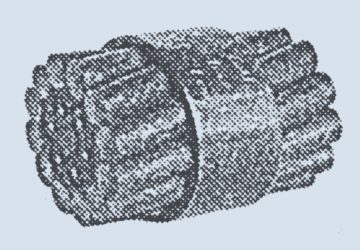 T
T Zizek has been out of the left-leaning limelight for a while. Maybe this inattention to his ego from the media, his fans and detractors is why he penned a piece attacking pacifists and calling for a stronger NATO in the June 21, 2022 edition of the mainstream liberal publication British publication the Guardian. Yes, like a few others mostly in the US/western European Left, Zizek has decided that the only response to the Russia-Ukraine conflict is full-on support for the Kyiv government, no matter what. Going beyond others on the Left who have voiced similar sentiments, but kept their opposition to NATO/US troops and air involvement intact, Zizek has jumped full on board with the “fight to the last Ukrainian” crowd; the liberals, nazis, church patriarchs and every other segment of the pro-war crowd.
Zizek has been out of the left-leaning limelight for a while. Maybe this inattention to his ego from the media, his fans and detractors is why he penned a piece attacking pacifists and calling for a stronger NATO in the June 21, 2022 edition of the mainstream liberal publication British publication the Guardian. Yes, like a few others mostly in the US/western European Left, Zizek has decided that the only response to the Russia-Ukraine conflict is full-on support for the Kyiv government, no matter what. Going beyond others on the Left who have voiced similar sentiments, but kept their opposition to NATO/US troops and air involvement intact, Zizek has jumped full on board with the “fight to the last Ukrainian” crowd; the liberals, nazis, church patriarchs and every other segment of the pro-war crowd. It’s tempting to fixate on the palliative effects of
It’s tempting to fixate on the palliative effects of